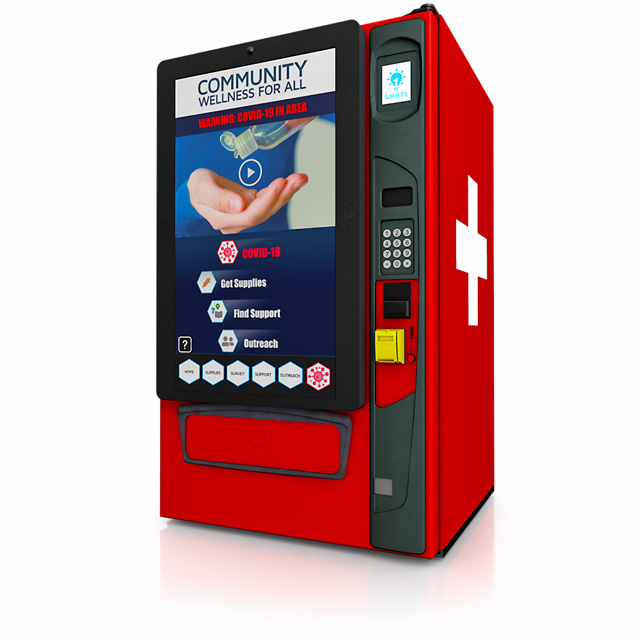A smart vending machine is a vending machine connected to the cloud, combining traditional product dispensing with modern internet technology for quick, safe, and efficient service. The SMRT1 POD stands out as a comprehensive healthcare technology solution that goes beyond traditional vending. With its distinctive 4-foot interactive touchscreen, each POD (Personalized On-Demand) serves as a community touchpoint that dispenses products and services. SMRT1 PODs feature on-screen interactive experiences, referral service links, and robust cloud analytics that transform usage data into actionable insights for service providers. Unlike competitors that offer traditional vending machine dispensing, SMRT1 PODs provide a complete ecosystem of hardware, software, analytics, and content updates – all customizable to meet the unique needs of each community they serve.
In healthcare settings, smart vending machines are transforming access to essential supplies and services. SMRT1’s HEALTH PODs provide 24/7 anonymous access to harm reduction supplies like naloxone kits and clean syringes, HIV test kits, and other public health resources. These interactive kiosks not only dispense critical healthcare items but also connect users with educational content and local support services. By placing these smart vending solutions in community centers, correctional facilities, and underserved areas, SMRT1 is helping bridge gaps in healthcare access while gathering valuable data to improve public health initiatives. This integration of vending and technology enables 24/7 access to essential products and services, from healthcare supplies to fresh food, while collecting important data to improve supply chain efficiency and enhance community health outcomes. SMRT1’s CARE System (Community Action, Response & Education) takes smart vending further by providing not just products but also education and resources to support public health initiatives.
Similar to the development of traditional mobile phones into smartphones, vending machines have also progressively, though at a much slower pace, evolved into smart vending machines. Newer technologies at a lower cost of adoption, such as the large digital touch display, internet connectivity, cameras and various types of sensors, more cost-effective embedded computing power, digital signage, various advanced payment systems, and a wide range of identification technology (NFC, RFID, etc) have contributed to this development. These smart vending machines enable a more interactive user experience, and reduce operating costs while improving the efficiency of the vending operations through remote manageability and intelligent back-end analytic. Integrated sensors and cameras also represent a source of such data as customer demographics, purchase trends, and other locality-specific information. It also enables better customer-engagement for the brands through interactive multimedia and social media connectivity.

